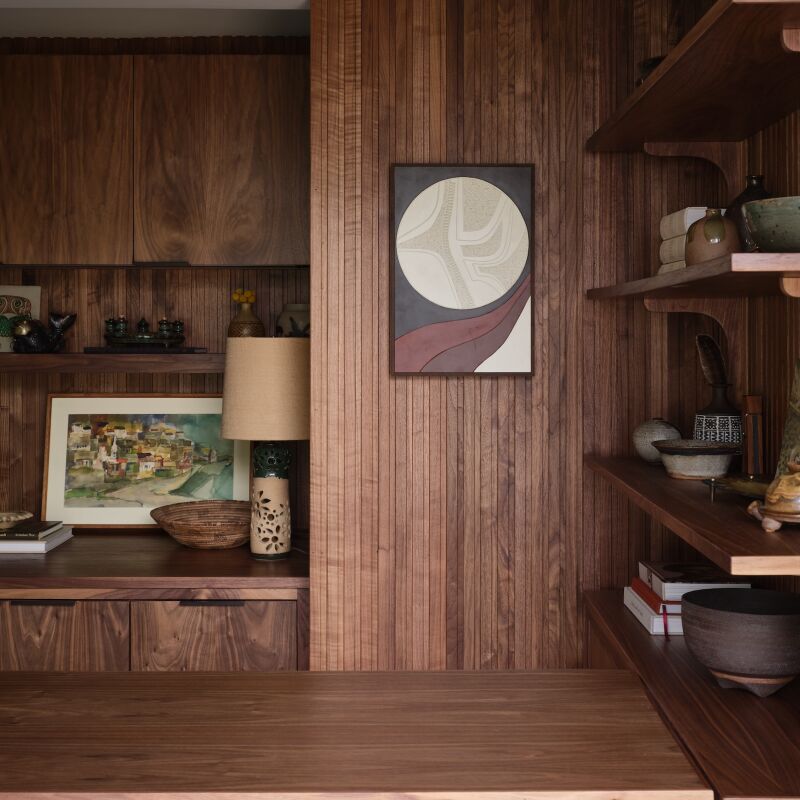The wonders of summer living have us contemplating how to adjust our daily routines the rest of the year. For inspiration, we’ve been turning to artist Andrea Zittel and her otherworldly live/work compound, A-Z West, on the edge of Joshua Tree National Park.
Zittel, a longstanding international art star who is represented by Andrea Rosen Gallery in New York and Regen Projects in LA, among others, describes her work as “encompassing all aspects of day-to-day living: home, furniture, clothing, food, all become the sites of investigation in an ongoing endeavor to better understand human nature and the social construction of needs.”
The home base for her study, A-Z West is spread over 35 acres of California’s high desert and features a dozen of what Zittel calls Wagon Stations, her signature futuristic living pods that look like compact trailers from Mars. Kindred spirits are invited to come stay for up to a month at a time in spring and fall, and we’re thinking of putting in an application.
Photography via TRNK, unless otherwise noted.
Above: Rising amid the boulders, Zittel’s flip-top living units are made of steel, aluminum, MDF, and Lexan. Residents can sleep in the open or pull down the roof for shade and protection from the wind.
Above: Single-size Wagon Stations are furnished with a mattress, shelf, hooks, sun hat (essential in these parts), flashlight, and brush for removing sand. Visitors stay free of charge, and the rules of the compound include pitching in an hour every morning on upkeep and kitchen duties.
Above: Some of Zittel’s sleeping units are scaled for one, others for a family, and several have been customized by artists in residence.
Zittel moved to the desert in 2000, established her setup as a nonprofit, and has been building a creative community since then. “We believe there are many ways to live, and that learning from others can offer new insight and perspectives on ourselves and the everyday environments we may think we already know well,” she says.
Above: The encampment has a communal kitchen that rises in the sand. Though it looks as if the encampment stands on its own, the town of Joshua Tree isn’t far.
Above: The structure, and tables too, are composed of concrete block and wood. Partial walls help keep out the sand.
Above: Zittel’s bare-bones design is detailed with steel storage cubes overhead. Bowls of various sizes are used for serving food and drink.
Initially water had to be trucked to the site, but eventually Zittel received a grant to build a well. Propane stoves are used for cooking and there’s no fridge. Zittel advises prospective guests: “Ideally you will be a kitchen cleaner, a cool chest organizer, and you won’t mind sometimes making extra coffee to share with others in the morning.” Photograph via A-Z West.
Above: An open-air shower area is situated on the other side of the wall, and elsewhere there are composting toilets.
“Our time at A-Z West was one of reflection, where everyday actions like preparing meals and going to the bathroom were reconsidered. Our movements were dictated by the elements–finding warmth in the mornings, shade in the afternoons, and shelter in downtown Joshua Tree during a few particularly brutal windstorms,” writes visitor Nick Nemechek of magazine/design shop TRNK. “By distilling the camp to the minimum, the artist challenged our relationship to the many objects we indiscriminately consider essential…The experience has made me an infinitely more discerning consumer of objects, space, and time.”
Above: Nestled at the foot of a rocky slope overlooking a valley, A-Z West is a two-hour drive east of LA. The colony also includes Zittel’s home and studio, three shipping containers converted into additional sleeping quarters, and a chicken coop. Learn more and explore Zittel’s far-ranging body of work and her blog at A-Z.
Intrigued? Here are two more creative hubs worth knowing about: Villa Lena, an Artist Residency and Hotel in Tuscany and Fogo Island Artist Studios in Newfoundland.





Have a Question or Comment About This Post?
Join the conversation